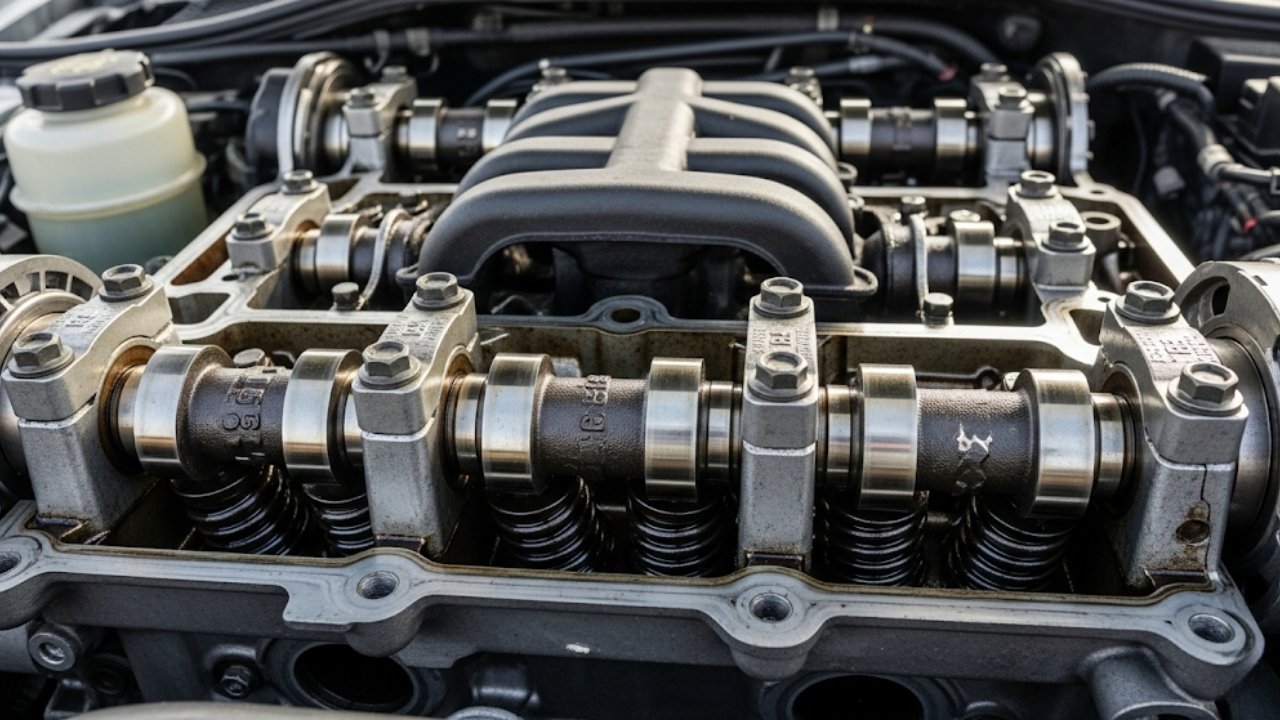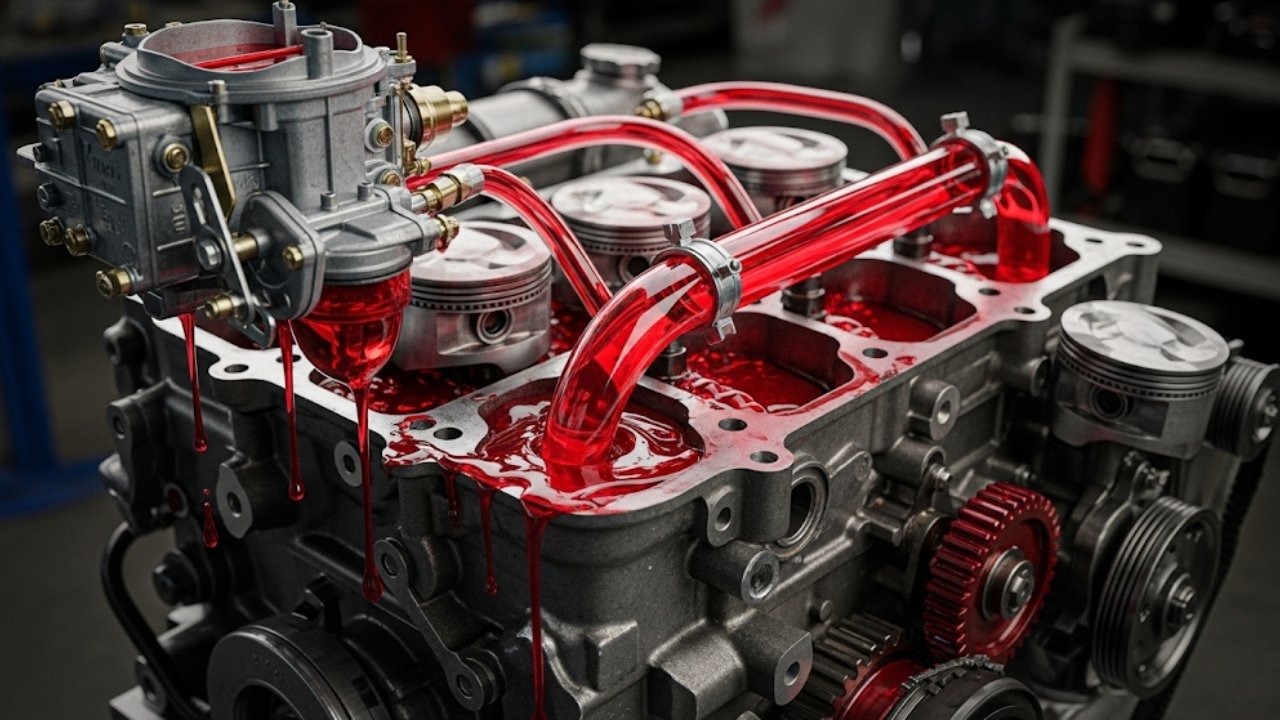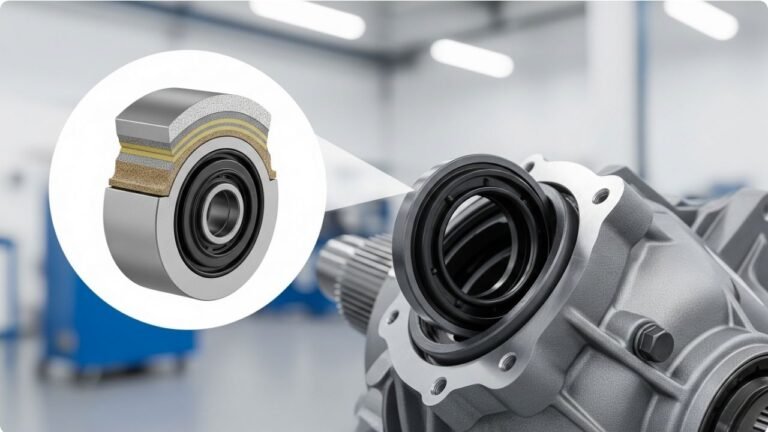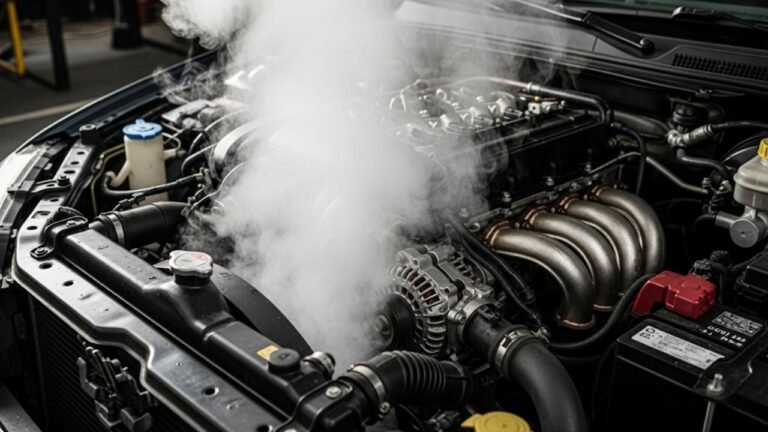Car Has No Oil, Won’t Start? Here’s What That Really Means

You wake up, grab your keys, and step out the door ready to start your day. Coffee in hand, dreams in your head. But then—click. Nothing. Not even a cough from the engine.
Panic creeps in. You try again. Still nothing.
You pop the hood, hoping to see something—anything. But then you remember: last week, you saw that oil warning light blink once. Then it vanished. You ignored it.
Now you’re here, wondering if it’s possible that your car has no oil, won’t start, and if that one missing fluid really made your car go silent.
Short answer? Yes. But let’s unpack it with stories, facts, and what you really need to know—especially if you’re someone who thinks, “Oil? Isn’t that just changed every few months?”
Let’s dive into why oil matters so much, what happens when there’s none, and what you should do next.
Why Engine Oil Is Like Blood for Your Car

Oil doesn’t just sit there doing nothing. It:
-
Lubricates the engine’s moving parts
-
Reduces heat and prevents overheating
-
Cleans debris and sludge
-
Protects against corrosion
-
Helps in sealing the combustion chamber
Without oil, metal parts grind against each other. Things get hot. Fast. And just like a human running a marathon with no water, your car won’t go far.
Personal Story Time
My cousin once drove a beat-up Civic for months, never checking the oil. One morning, it didn’t start. The mechanic said the engine had seized. “Dry as a desert,” he said.
That Civic ended up in a junkyard—all for skipping a $30 oil change.
So yes, if your car has no oil, won’t start, this is more than a coincidence.
How to Know if Your Car Has No Oil
You might not be a mechanic, but you can still play detective. Look out for these signs:
-
Oil warning light flickering or staying on
-
Engine knocking or ticking sounds before it went silent
-
Burning oil smell
-
Overheating
-
A long delay in starting or the car won’t crank at all
You can also check the oil dipstick (if your car has one). Here’s a quick guide:
| Step | Action |
|---|---|
| 1 | Turn off the engine and let it cool |
| 2 | Pull out the dipstick, wipe it clean |
| 3 | Reinsert it, then pull it out again |
| 4 | Check the oil level and color (should be amber and within safe range) |
If it’s bone dry? That’s your answer. Your car has no oil and won’t start because it’s trying to protect itself.
Will a Car Start If There’s Absolutely No Oil?
Here’s where it gets tricky.
Some engines will still crank and start with no oil—but just briefly. It’s like running a marathon with no shoes. Sure, you can take a few steps, but soon, you’ll collapse.
Many modern cars have fail-safes built in. If the engine senses zero oil pressure, it may refuse to start at all. That’s not a bug. That’s a feature designed to save your engine from destroying itself.
Think of it as your car saying: “Nope. I’m not doing this. You fix me first.”
So if your car has no oil won’t start, it may be your engine’s cry for help—not a random glitch.
What Happens Inside the Engine When There’s No Oil
Here’s a metaphor. Picture a symphony orchestra—strings, brass, percussion—all playing in perfect harmony.
Now, take away the conductor and throw in some chaos.
That’s your engine without oil.
Here’s what really happens:
-
The crankshaft and camshaft lose lubrication and start to grind
-
Pistons create heat through friction
-
The metal expands, causing warping
-
Eventually, it seizes—which is a fancy way of saying it freezes and locks up
You might get one or two tries to start it. But once damage sets in, it’s too late.
A seized engine means total failure—and often, a complete replacement.
Repair Costs When You Ignore Oil Problems
Let’s talk numbers, because this is where people gasp.
| Type of Damage | Estimated Cost |
|---|---|
| Oil Change | $30–$100 |
| Replacing Engine Bearings | $1,500–$3,000 |
| Rebuilding an Engine | $3,000–$6,000 |
| Full Engine Replacement | $4,000–$10,000+ |
Yup. All that just because the car was low or dry on oil.
If your car has no oil won’t start, and the engine seized, chances are you’re facing big bucks—or scrapping your car altogether.
Can You Add Oil and Then Start the Car?
It’s a fair question.
You might think: “Okay, I’ll just pour in some oil and everything will be fine.”
Sometimes that works. If your car shut off just before serious damage, you might be in luck.
But here’s the catch: Adding oil doesn’t undo damage.
If the engine ran dry and there was metal-on-metal contact, you may have already caused internal wear or full failure.
Here’s what you should do:
-
Add the correct type and amount of oil
-
Wait 5–10 minutes
-
Try starting the engine
-
Listen for knocking, clicking, or struggling sounds
If it starts, get it to a mechanic immediately. If it doesn’t? Tow it. Don’t keep trying to crank—it only makes things worse.
Common Reasons Why Your Car Has No Oil
So how did you even end up with no oil in the first place?
Here are the usual suspects:
-
Oil leaks (check under the car for puddles or stains)
-
Burning oil (happens with older engines or bad piston rings)
-
Neglected oil changes
-
Faulty oil pump
-
Cracked oil pan
And sometimes… it’s human error. You or your mechanic simply forgot to refill it after a change. It happens more often than you’d think.
Emergency Tips If Your Oil Light Comes On While Driving
If you’re driving and see the oil light flash or stay on, stop immediately.
Don’t think: “I’ll make it home.” That decision could total your engine.
Here’s what to do instead:
-
Pull over safely
-
Turn off the engine
-
Wait 10 minutes and check the oil
-
Add oil if available
-
If no oil is visible on the dipstick, call a tow truck
Driving with zero oil isn’t heroic—it’s tragic. Don’t risk it.
How Mechanics Diagnose “Car Has No Oil, Won’t Start”
When your car is towed to a shop and the technician hears, “My car has no oil, won’t start,” they’ll start with the basics—but also check deeper.
Here’s what a good mechanic will usually inspect:
-
Oil level and condition on the dipstick
-
Signs of engine seizure (can’t manually rotate the crankshaft)
-
Starter motor health
-
Compression test (to see if the engine is still structurally sound)
-
Listen for internal noises (knocks, rattles, squeals)
-
Plug in a diagnostic scanner for engine codes
If the engine is locked up, they’ll often try turning it with a breaker bar. If it won’t budge, it’s seized. That’s your worst-case scenario.
On the bright side, if it’s just low oil and the engine didn’t fully seize, flushing the system and replacing damaged bearings might revive it.
But honesty time: many dry-engine cases aren’t that lucky.
Why Your Car Refuses to Start (It’s Smarter Than You Think)
It’s tempting to think your car is just “dead.” But in truth, many newer vehicles are designed to protect themselves. A low-oil or no-oil condition can trigger a safety lockout, where the computer cuts power to the ignition or fuel system to avoid damaging the engine.
That’s why adding oil doesn’t always lead to an instant restart. Your car’s brain is acting like a cautious parent: “Not until you fix this mess.”
This is especially true in hybrids, newer sedans, and luxury brands like BMW, Lexus, and Audi. They won’t even let you try cranking if oil pressure is zero.
This isn’t a malfunction. It’s built-in damage control.
️ How to Prevent This Nightmare From Ever Happening Again
You can save thousands of dollars and hours of frustration just by being proactive. Here’s how to keep your car from ending up in this situation again:
✅ Maintenance Habits That Save Engines
-
Check your oil every 2 weeks, especially if your car is over 5 years old
-
Change oil every 3,000–7,000 miles, depending on vehicle and oil type
-
Watch for puddles under your car—especially after overnight parking
-
Don’t ignore warning lights—that flickering oil symbol is begging for attention
-
Listen to your car—tick-tick sounds, rough idles, or stuttering starts are red flags
-
Top off oil if it’s low, but don’t overfill (that can be just as bad)
Use a Simple Checklist
| Weekly Checks | Monthly Tasks | Every 6 Months |
|---|---|---|
| Check oil level | Inspect for leaks | Schedule oil change |
| Look under the car | Listen for odd noises | Full engine inspection |
| Watch warning lights | Look for burning smells | Replace oil filter |
This table isn’t just for people who “love cars.” It’s for everyday folks who want to protect their investments—and avoid the fate of a seized engine.
♂️ A Story You Might Relate To
Let me tell you about Fahim. He was a delivery driver for a local food app, driving long hours, often skipping maintenance because “time is money.”
One day, while racing to deliver biryani to a customer, his Toyota stalled at a light. Wouldn’t restart. He called me, frantic.
We opened the hood. Dipstick? Dry. Bone dry.
“Didn’t you change your oil?” I asked.
He scratched his head. “I thought I did. Maybe… six months ago?”
Long story short: engine was toast. He ended up borrowing money to replace it.
Sometimes it’s not about being careless—it’s just forgetting how fragile these machines can be. But cars, like people, give warning signs before they collapse. We just have to listen.
Let’s Talk Emotions: Don’t Beat Yourself Up
It’s easy to feel guilty. Angry. Embarrassed.
You’re not alone. Hundreds of thousands of drivers deal with no oil engine failures every year. Life gets busy. Warning lights flicker at the worst times. We assume it’ll be fine… until it’s not.
So here’s the truth:
-
You’re not stupid.
-
You’re not irresponsible.
-
You just didn’t know how close your engine was to giving up.
Now you do. And that knowledge is power.
Use it to take better care of your next vehicle—or the one you just revived.
Recap: What To Do If Your Car Has No Oil and Won’t Start
Let’s summarize everything in clear, simple steps.
If Your Car Has No Oil, Won’t Start:
-
Check the oil dipstick – Is it dry or nearly dry?
-
Don’t keep trying to start the engine – It makes things worse
-
Add the right oil, if available
-
Wait and then attempt a gentle restart
-
If it still won’t start, call a tow truck
-
Ask your mechanic to check for engine seizure and oil system failure
-
Prepare for potential repair or replacement options
FAQs About “Car Has No Oil, Won’t Start”
1. Can a car actually run with no oil?
Only for a few seconds or minutes. Then it’ll either overheat or seize. Running without oil is like running barefoot on broken glass—painful and destructive.
2. Why would a car have no oil at all?
Leaks, burning oil, neglecting changes, or human error during service. Older cars lose oil faster than newer ones.
3. Can I fix this myself at home?
If the engine isn’t damaged and you catch it early, adding oil might solve it. But if the engine seized, you’ll need a pro.
4. What kind of oil should I add if I’m unsure?
Use the oil grade listed in your owner’s manual. If in doubt and in an emergency, 5W-30 is safe for many cars—but follow up with a mechanic ASAP.
5. Does insurance cover engine damage from no oil?
Usually not. Most policies consider it preventable damage and won’t pay for repair or replacement.
6. Will my check engine light come on if oil is low?
Sometimes. But the oil pressure light or low oil level light are more reliable indicators.
7. What should I do if I just bought a used car and this happened?
Get a full inspection. You may be able to pursue legal options if the seller knowingly sold a damaged engine.
Final Thoughts: Listen to Your Car, Love Your Ride
When your car has no oil won’t start, it’s not just a random failure. It’s your car screaming for help.
Oil isn’t optional. It’s essential. Just like water to a plant or food to your body, oil is what keeps your engine alive.
Checking it takes 2 minutes. Fixing it after failure? That can take weeks—and cost more than the car’s worth.
So take this moment not as a punishment but a lesson. Whether you’re a first-time driver, a parent managing a family SUV, or a gig worker relying on your ride—treat oil like gold.
It might just save your engine—and your wallet.





